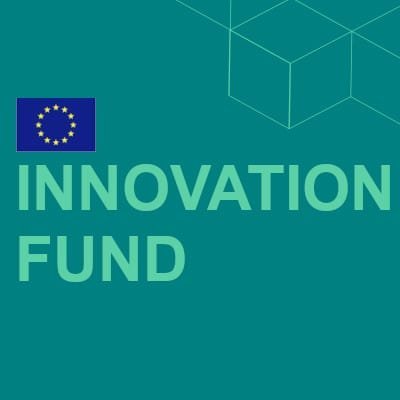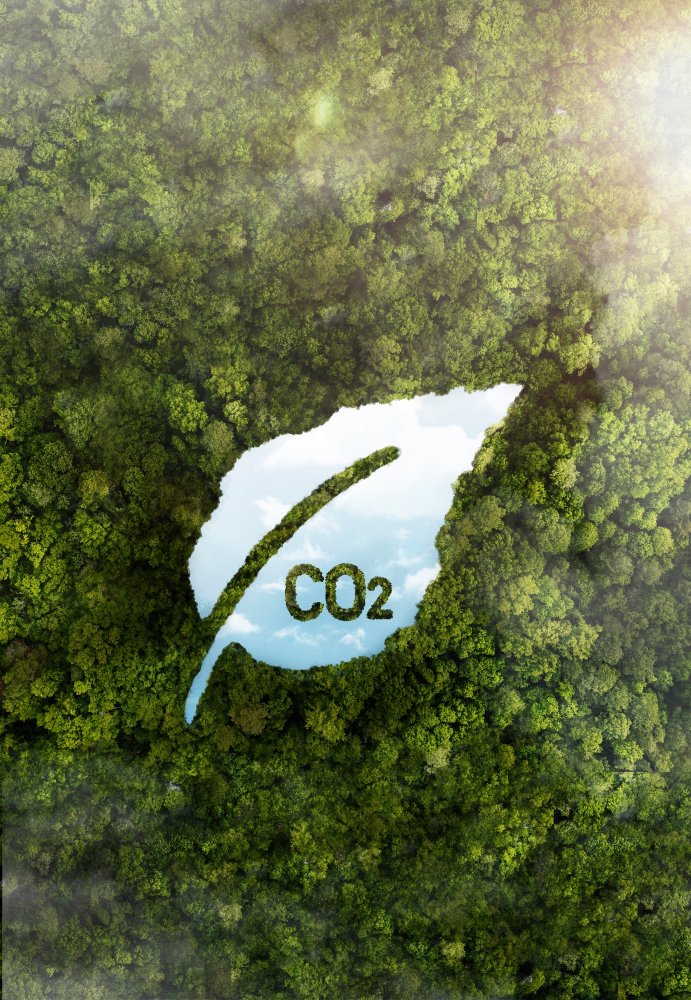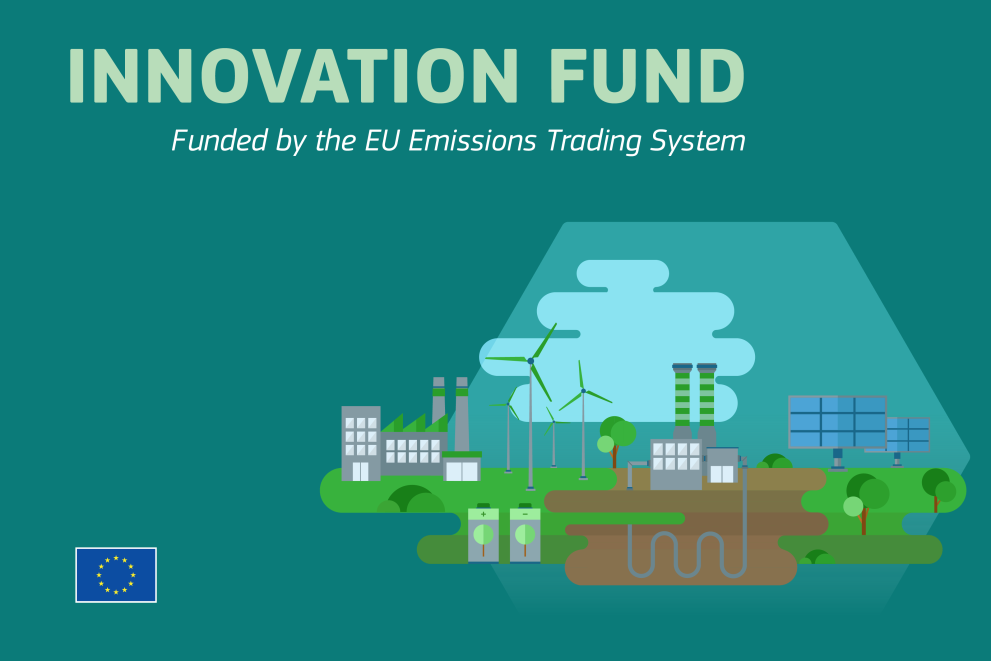Innovation Fund Program
European funding for innovative low-carbon technologies
- Welcome
- EU funding program
- Innovation Fund
Summary
Introduction to the Innovation Fund program
The Innovation Fund is one of the world's largest funding programs for the demonstration of innovative low-carbon technologies. Created under the EU Emissions Trading System (EU ETS), this fund is a key instrument of European climate policy to support the transition to carbon neutrality by 2050.

Within the European financing ecosystem, the Innovation Fund occupies a strategic position by focusing specifically on the critical phase of commercial-scale demonstration of innovative low-carbon technologies. Unlike other instruments such as Horizon Europe which mainly finance the research and development phases, the Innovation Fund targets projects ready to take the step of industrial demonstration and commercial deployment, thus bridging the gap between innovation and the market.
The strategic objectives of the Innovation Fund are fully aligned with the European vision of the Green Deal and enhanced climate ambitions. The program aims to:
- Support highly innovative projects to reduce greenhouse gas emissions
- Accelerate the commercialization of clean technologies and their industrial deployment
- Boosting green economic growth and strengthening European competitiveness
- Developing the next generation of technologies and solutions needed for climate neutrality
- Creating local jobs for a just transition to a low-carbon economy
For the period 2020-2030, the Innovation Fund has a massive budget of around €38 billion (based on current carbon price projections), generated by the auctioning of 450 million emission allowances from the EU ETS. This considerable envelope confirms the EU's strong commitment to climate innovation as a driver of transformation for the European economy.
Pioneering technologies for a carbon-neutral economy
Specific objectives and priorities
The Innovation Fund supports disruptive technologies in sectors strategic to Europe's ecological transition. This major funding represents an exceptional opportunity for innovative companies wishing to develop, demonstrate, and deploy low-carbon industrial solutions.

Main thematic axes
The Innovation Fund supports innovative projects in energy-intensive industrial sectors, focusing on several thematic areas:
Energy-intensive industries
- Decarbonization technologies and processes for energy-intensive industries
- Carbon-intensive substitutes
- Carbon Capture and Utilization (CCU) in Industrial Processes
- Carbon Capture and Storage (CCS) for Industrial Emissions
Innovative renewable energies
- Emerging or not yet commercialized renewable technologies
- Innovative solutions for the integration of renewables
- Innovative energy storage
- Offshore and disruptive renewable energies
Energy storage
- Large-scale storage solutions
- Innovative short and long term storage
- Next-generation batteries
- Advanced thermal solutions
Smart energy networks
- Solutions for sectoral integration
- Integration of variable renewable energy sources
- Intelligent demand management
- Flexibility solutions for networks
Carbon Capture, Utilization and Storage (CCUS)
- Industrial CO₂ capture technologies
- Using CO₂ to create sustainable products
- CO₂ transport and storage infrastructure
- Negative emissions and direct air capture
Sectoral priorities
Although all industrial sectors are eligible, the Innovation Fund pays particular attention to sectors that are difficult to decarbonize:
- Steel and metallurgy
- Cement and building materials
- Chemistry and petrochemistry
- Paper and pulp
- Glass and ceramics
- Hydrogen and e-fuels
- Refining and synthetic fuels
- Capture and recovery of CO₂
The program particularly encourages projects with high emission reduction potential and a high level of innovation compared to existing technologies on the market.
European strategic objectives supported
The Innovation Fund is part of major European strategic guidelines, in particular:
- The European Green Deal and the objective of climate neutrality by 2050
- European industrial strategy and low-carbon competitiveness
- The “Fit for 55” package aims to reduce emissions by at least 55% by 2030
- The strategy for hydrogen and integrated energy systems
- The action plan for the circular economy
- The EU strategy for reducing methane emissions
Expected impact at European level
Innovation Fund projects must demonstrate their potential to generate significant impacts:
- Substantial and verifiable reduction in greenhouse gas emissions
- High degree of innovation compared to the state of the art in the sector
- Project maturity allowing rapid implementation and commercialization
- Cost effectiveness (cost per tonne of CO₂ avoided)
- Potential for replicability and large-scale extension
- Job creation and regional economic development
Contribution to European energy independence

Types of projects funded
The Innovation Fund finances two main categories of projects:
- Large-scale projects :
- Projects with capital expenditure (CAPEX) greater than 7.5 million euros
- Aim to demonstrate highly innovative technologies on an industrial scale
- Typical duration: 3-5 years for construction + 5-10 years of operation
- Funding: up to 60% of additional costs related to innovation
- Small-scale projects :
- Projects with investment expenditures between 2.5 and 7.5 million euros
- Focus on promising innovations requiring validation before scaling up
- Typical duration: 2-3 years for construction + 3-5 years of operation
- Financing: up to 60% of total CAPEX
The program also offers specific procedures:
- Calls for thematic projects targeting specific sectors or technologies
- Project development mechanism (Project Development Assistance) for promising but still insufficiently mature projects
- Public procurement before commercialization to stimulate innovation through public demand
For smaller-scale environmental projects or projects focused on biodiversity rather than industrial decarbonization, the program LIFE may constitute a more suitable alternative than the Innovation Fund.

Concrete examples of projects already funded
Here are some illustrative examples of projects that received funding from the Innovation Fund during the first calls:
- Installation of a large-scale CO₂ capture system in a cement plant, with recovery for e-fuels (Sweden)
- Deployment of electrolysers to produce green hydrogen to replace grey hydrogen in a refinery (Netherlands)
- Integrated hydrogen-based steelmaking project, drastically reducing emissions compared to conventional blast furnaces (Finland)
- Biomass power plant with carbon capture, generating negative emissions (Bio-CCS) (Denmark)
- Deployment of a high-temperature thermal energy storage system using innovative materials (Spain)
- Pilot project for advanced chemical recycling of hard-to-recycle plastic waste (France)
Supported technological innovations
The Innovation Fund particularly targets projects which:
- Develop technologies with a high TRL (Technology Readiness Level), generally between 7 and 9
- Offer disruptive or breakthrough solutions for carbon-intensive sectors
- Integrate different innovative technologies in synergy (systemic approach)
- Demonstrate significant potential for reducing emissions compared to benchmarks
Have medium-term commercial viability without ongoing support
Priority sectors
Although all sectors contributing to the low-carbon transition are eligible, the following technologies are particularly valued:
- Technologies for the production of green hydrogen and its use in industry
- CCUS solutions integrated into industrial processes
- Production of low-carbon materials and chemicals
- Next-generation innovative energy technologies
- Solutions for sectors that are difficult to decarbonize (cement, steel, chemicals)
- Negative emissions technologies (BECCS, DACCS)
- Advanced electrification solutions for industry
Advanced synthetic fuels and biofuels

Support by MarketKaps

Specific expertise on this program
Marketkaps has extensive expertise in the Innovation Fund program, a result of our involvement and successful support of multiple project leaders across Europe. Our team includes expert evaluators and active experts who are fully conversant with the evaluation criteria and specific requirements of the Innovation Fund.
Our experts combine technical expertise in targeted industries (energy, CCUS, heavy industries), a deep understanding of financing mechanisms, and hands-on experience in building successful applications. This multifaceted expertise allows us to effectively guide you through the complexities of the program.


Personalized support methodology
Our support approach for the Innovation Fund follows a proven 6-step methodology:
- Strategic assessment : In-depth analysis of your technology and its decarbonization potential
- Optimal positioning : Identification of the most suitable financing mechanism (large scale, small scale or development assistance)
- Technical and financial structuring : Precise definition of the project, its implementation methodology and its economic model
- Carbon impact calculation : Rigorous quantification of avoided emissions according to the methodology required by the Innovation Fund
- File assembly : Development of a complete technical and financial proposal, clearly demonstrating the five evaluation criteria
- Preparation for the assessment : Coaching for interviews with assessors and answers to technical questions

Services offered
Marketkaps offers complete or modular support according to your needs:
- Eligibility diagnosis and technological maturity analysis
- Support for the calculation and validation of GHG emission reductions according to the Innovation Fund methodology
- Development of the business plan and financial modeling
- Technical structuring of the project and definition of milestones
- Risk analysis and mitigation strategies
- Assistant for the complete drafting of the application file
- Preparation of technical and financial annexes
- Administrative assistance for contractualization
- Support for reporting and project monitoring

Eligibility conditions
Eligibility criteria for organizations
To be eligible for the Innovation Fund, applicants must meet the following conditions:
- Legal entities : Any public or private legal entity established in an eligible country
- Consortium or individual application : Projects can be submitted by a single entity or by a consortium (without a minimum number of partners)
- Financial strength : Ability to co-finance the portion of costs not covered by the grant
- Operational capacity : Skills and resources needed to carry out the project
Unlike other European programs, the Innovation Fund does not require a transnational consortium, allowing national projects or even projects led by a single company to be funded.
Types of businesses concerned
The Innovation Fund is available to a wide range of organizations:
- Industrial companies : Particularly those in energy-intensive sectors
- Technology providers : Companies developing innovative low-carbon solutions
- SMEs and large companies : No size restrictions, with attention to transformative projects
- Energy producers : Companies in the energy production and distribution sector
- Infrastructure operators : Energy network and infrastructure managers
- Public-private consortiums : Collaborations between industrialists, communities and research centers
Partnerships between technology developers and industrial users are particularly valued, as they strengthen the potential for commercial deployment.

Geographic criteria
The Innovation Fund program covers:
- The 27 member states of the European Union
- Norway and Iceland (EEA members)
- Projects must be implemented in the territory of eligible countries
- Collaborations with entities from third countries are possible, but the core of the project must remain in the eligible countries
Technical or scientific prerequisites
Innovation Fund projects must meet several technical criteria:
- Degree of innovation : Technology must go beyond the state of the art and best available technologies
- Technological maturity : High TRL, typically 7-9, with successful pilot scale demonstration
- Emission reduction potential : Demonstrated ability to significantly reduce GHG emissions
- Project preparation : Advanced level of technical design and complete feasibility study
- Solid business plan : Credible business model and clear path to commercial viability
Projects must also demonstrate their potential for scaling up and replication, as well as their contribution to European climate objectives.


Financing arrangements
Financing rates by type of organization
The Innovation Fund offers an innovative financing system based on several mechanisms:
- Large-scale projects :
- Funding up to 60% of “relevant costs”
- Relevant costs represent the additional costs (CAPEX and OPEX over 10 years) related to the application of the innovative technology compared to a conventional technology
- Staged payment: 40% upon signing, 60% during the operating phase based on GHG emissions actually avoided
- Small-scale projects :
- Financing up to 60% of total capital expenditure (CAPEX)
- Simplified payment with the possibility of a larger advance
- Assistance with project development :
- Fixed grant for project development (technical studies, financial studies, etc.)
- Up to 1 million euros per project
Grant ceilings
Funding amounts vary considerably depending on the size and ambition of the projects:
- Large-scale projects :
- No formal ceiling, but typical grants range from €10 million to €150 million
- Major industrial demonstration projects can receive up to 300 million euros
- Small-scale projects :
- Typical grants between 1.5 and 4.5 million euros (60% of CAPEX capped at 7.5 million)
- Development assistance :
- Up to 1 million euros per project
Eligible costs
Eligible cost categories vary depending on the type of project:
- For large-scale projects (relevant costs):
- Additional capital expenditure (CAPEX) compared to a conventional solution
- Net operating costs (OPEX) over 10 years: difference between costs and benefits of the innovative vs. conventional solution
- Transaction costs (studies, engineering, permits) to a limited extent
- For small scale projects :
- Mainly the total capital expenditure (CAPEX) of the project
- Some preparation costs may be included
Co-financing required
The Innovation Fund program operates on the principle of co-financing:
- The project leader must finance at least 40% of eligible costs
- This co-financing may come from own resources or other sources (loans, investors, national aid)
- National or regional aid may be combined with the Innovation Fund, subject to compliance with state aid rules
- The project must demonstrate its complete financial structure, including secured or envisaged sources of financing
Marketkaps can help you identify complementary sources of co-financing and optimize your financial engineering to maximize the leverage effect of European financing.


Application Process
Calendar and calls for projects
The Innovation Fund operates with a system of regular calls for projects:
- Frequency : Generally one main call per year for large-scale projects, and one for small-scale projects
- Thematic calls : More and more calls targeting specific sectors or technologies
- Two-step procedure for large-scale projects:
- Step 1: Expression of interest (concept note) evaluated on three criteria (degree of innovation, potential for GHG reduction, maturity)
- Step 2: Full proposal for shortlisted projects, assessed on the five full criteria
- One-step procedure for small-scale projects: Direct submission of a full proposal
Required documents
Applying for the Innovation Fund requires the preparation of several key documents:
- For Stage 1 (Large-scale projects) :
- General Application Form
- Description of the technical innovation
- Calculation of avoided GHG emissions
- Implementation plan and financial commitment
- Required authorizations and preliminary studies
- For Stage 2 or Small Scale Projects :
- Detailed technical documentation
- Complete business plan
- Financial plan and sources of financing
- Detailed cost analysis
- Risk analysis and mitigation strategies
- Complete and documented calculation of avoided GHG emissions
- Deployment and Replication Plan
Marketkaps supports you in the preparation of each of these documents, with particular attention to overall technical and economic consistency and the rigor of emissions calculations.
Submission Steps
The Innovation Fund submission process includes the following steps:
- Registration on the EU Funding & Tenders funding portal
- Preparation of documents according to the requirements of the call
- Electronic submission before the deadline
- Assessment by independent experts
- For large-scale projects : Notification of pre-selection and invitation to stage 2
- Preparation of the complete file (step 2 or small scale)
- Interviews with the evaluation panel for the preselected projects
- Final decision of the European Commission
- Preparation of the grant agreement for the selected projects
The entire process can take between 9 and 18 months depending on the complexity of the project and the type of call.
Proposal evaluation criteria
Innovation Fund projects are evaluated according to five main criteria:
- Degree of innovation (5 points) :
- Innovation beyond the state of the art
- Advantages over existing technologies
- Innovative nature of processes or products
- Potential for reducing GHG emissions (15 points) :
- Absolute amount of emissions avoided
- Cost-effectiveness ratio (€/tonne of CO₂ avoided)
- Robust calculation and monitoring methodology
- Project maturity (5 points) :
- Technical and operational feasibility
- Organizational structure and team qualifications
- Progress of required authorizations and permits
- Extensibility (5 points) :
- Potential for deployment in similar applications
- Large-scale replication plan
- Knowledge sharing actions
- Cost efficiency (10 points) :
- Viability of the business model
- Soundness and completeness of the financial plan
- Optimized cost structure
Each criterion is scored according to a specific scale, with particular importance given to emission reduction (triple weighting) and cost efficiency (double weighting).
Marketkaps optimizes your file to maximize your score on each of these criteria, with particular attention to demonstrating and quantifying emissions reductions.


Success rates and key factors
Success statistics for this program
The Innovation Fund program has the following characteristics in terms of success rate:
- Overall average success rate : Approximately 15-20% across Europe (varies depending on calls)
- Step 1 (large scales) : Approximately 30-40% of the proposals are retained for the second stage
- Step 2 (large scales) : 40-50% of shortlisted projects obtain funding
- Small-scale projects : Slightly higher success rate, around 20-25%
- Variation by sector : Green hydrogen, CCUS and industrial energy efficiency projects generally have the highest rates
- Evolution : Trend towards increasing competition, with a constantly increasing number of applications
Common Mistakes to Avoid
Our experience has allowed us to identify the main errors that penalize Innovation Fund applications:
- Insufficient degree of innovation : Technologies too close to solutions already on the market
- Inaccurate emissions calculation : Methodology for calculating avoided GHGs insufficiently rigorous
- Poorly defined basic assumptions : Baseline scenario imprecise or too optimistic
- Unrealistic business plan : Financial projections that are too optimistic or insufficiently supported
- Insufficient level of preparation : Technical feasibility insufficiently demonstrated
- Non-optimized costs : Cost-effectiveness ratio (€/tonne CO₂) too high
- Vague deployment plan : Insufficiently developed replication and expansion strategy
- Superficial risk analysis : Incomplete risk identification and mitigation plans
Marketkaps ensures that these weak points are corrected before submission to maximize your chances of success.
Differentiating factors for a successful application
The factors that make the difference in obtaining Innovation Fund funding are:
- Disruptive technological innovation with clear demonstration of the advantages over the state of the art
- Significant and well-quantified carbon impact with robust methodology
- Viable and detailed economic model demonstrating medium-term profitability
- Experienced project team with track record in industrial deployment
- Integrated systemic approach combining several complementary innovations
- Advanced project maturity with detailed technical studies and permits in the process of being obtained
- Realistic and detailed planning with clear milestones and critical path analysis
- Risk management strategy complete and convincing
Marketkaps feedback
Our experience supporting numerous Innovation Fund projects has enabled us to identify best practices:
- Accurate and rigorous quantification of avoided GHG emissions is the most critical element of success
- Projects combining several technologies in synergy are generally better evaluated
- Early involvement of regulators and local stakeholders significantly enhances credibility
- A diversified financial strategy, combining different sources of financing, is highly valued
- Highlighting environmental co-benefits (beyond the reduction of GHGs) constitutes an asset
- Projects with immediate and clearly identified replication potential are favored.
- A detailed sensitivity analysis demonstrating the robustness of the project in the face of variations in carbon prices and energy markets is highly appreciated.
- Clarity and conciseness of the presentation, despite technical complexity, are decisive factors in the evaluation
- A careful balance between innovation ambition and technical and economic realism is crucial

FAQ about the Innovation Fund program
Frequently Asked Questions by Businesses
Is my project innovative enough for the Innovation Fund?
Innovation in the context of this program is not limited to completely new technologies. Any technology that goes beyond the commercial state of the art in your sector or applies an existing technology in a novel way is considered innovative. Marketkaps can conduct an accurate benchmark to position your technology and maximize the demonstration of its innovativeness.
How are avoided GHG emissions calculated?
The calculation must follow the Innovation Fund's specific methodology, which compares the emissions of the innovative project with those of a reference scenario (a conventional technology that would likely be deployed in the absence of the Innovation Fund). This calculation includes both direct and indirect emissions and must be accurately documented. This is a crucial aspect where Marketkaps brings considerable added value thanks to its expertise.
Can the Innovation Fund be combined with other public funding?
Yes, the Innovation Fund can be combined with national or regional funding, as well as with other European programs such as the Connecting Europe Facility or InvestEU, subject to compliance with state aid rules. This combination often optimizes the project's financial structure. Marketkaps can help you design an optimal blended financing strategy.
What are the chances of success for a first deposit?
First-time submissions without professional support have a success rate of less than 10%. With Marketkaps' support, this rate rises to more than 35% even for a first-time submission, thanks to our in-depth knowledge of the evaluation criteria and our experience with projects funded by the Innovation Fund.
How exactly does the calculation of "relevant costs" work?
For large-scale projects, the relevant costs are the sum of:
- The difference between the CAPEX of the innovative project and those of an equivalent conventional installation
- The discounted difference between OPEX and revenues over 10 years of operation
If this difference is negative (the innovative solution is more profitable in the long term), only the difference in CAPEX is taken into account. If the difference is positive, the entire cost is considered a relevant cost. This complex calculation can significantly influence the amount of the subsidy. Marketkaps has mastered this methodology and can optimize your financial model accordingly.
What is the grant payment process?
The Innovation Fund offers a unique payment mechanism:
- Up to 40% of the grant can be paid upon signing the agreement, based on project milestones
- Up to 60% is paid during the operating phase, depending on the GHG emissions actually avoided
- For small-scale projects, a larger proportion may be paid before operation.
This mechanism incentivizes the actual performance of the project. Marketkaps helps you structure your project to optimize cash flow and secure initial payments as much as possible.
Maximize your chances of success with our expertise
Ready to launch your Innovation Fund project?
Marketkaps supports you every step of the way, from initial assessment to final submission, to maximize your chances of securing Innovation Fund funding and realizing your vision of a decarbonized industry.
Please contact us with any questions or to discuss your industrial decarbonization project. Together, let's contribute to the European goal of climate neutrality while strengthening your competitiveness.


